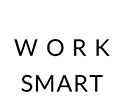Feature Walkthrough 2
FOCI’s Deep Work
| See how Alex uses FOCI’s Deep Work to gain the edge and prepare for his upcoming entrance examination. |
The countdown to the college entrance examination has started. Alex stays rooted in the library, everyday, preparing for the exam, until it closes late in the evenings. Alex can feel the stakes at hand, and dare not slack off for a second. This is also the reason why Alex likes FOCI's fatigue alert the most. Those '5 quick vibrations' not only bear testimony to Alex's efforts, it also gives him a 'peace of mind', to stop for a rest.

During this protracted exam revision, it is inevitable that there are moments, when Alex was focusing well, but then, various rousing imageries; from his favorite games, TV series, his dates, or even what to eat for his next meal, pop into his head. When Alex catches himself stuck in this distraction loop, it’s often, a long while has passed. But now it's different. The distraction alert in the FOCI's Deep Work session nudges Alex when he loses focus. It's like a stern instructor, who always watches over Alex and doesn't give him a chance to slack off. Alex feels very satisfied. In times of intense exam revision, every second counts. The more sensitive 'early distraction alert' is much more strict than the ordinary 'distraction alert'.

The Mental Performance indicator and Tension Overload index in the Deep Work session are like a treadmill speedometer for Alex. It clearly shows Alex, his learning status, at every moment. When he sees that his tension load is too high, his mental performance is usually poor, and he can also feel that learning efficiency is definitely not high at this time. Trying hard to push on and revising is inefficient or even futile. In the past, Alex didn't have much awareness of this aspect, he would keep pushing on and study, irrespective of efficiency, but now, he would first find a way to resolve these pressures himself, first. When he gets his balance, his mental performance naturally improves, and his revision efficiency is much higher. Alex is surprised to find that the improvement in his awareness of his mental state can make him feel so much more in self-control, which improves his mindset toward studying.

When he feels that he is in a good state, he especially looks forward to his 'Productivity Report' after each 'Deep Work Session’. When Mental Flow index tips over 80%, it draws out the beautiful curvature of Focus Bandwidth. For a 60 minutes of deep work session, there are more than 50 minutes of deep focus time, which really gives him a sense of accomplishment. More importantly, he knows he is making really good progress with his work. These are the times, he saves the 'Productivity Report' in his photo album and takes it out to motivate himself when he is in a bad state. When he makes a breakthrough with his personal bests, he often shares it with his friends to show off.

This tangible feeling of accomplishment is constantly propelling Alex forward. Now, Alex feels really motivated. He will definitely go all out to ace the exam and get into his dream school!
Deep Work
What is it?
When you see ‘Mental Performance’ score, this is an approximation of your current capacity for concentration.
What to do:
‘Mental performance’, lets you know at the moment how likely you are to get into cognitive focus. You would be able to use this to understand how your capacity to focus varies throughout the day.
What is it?
When you see ‘Tension Overload’ score, this is an approximation of your general tension level.
What to do:
‘Tension Overload’, lets you know at the moment how likely you are to get into stress and fatigue. You would be able to use this as an early detection of excess tension, that would tire you much faster.
What is it?
When you see ‘Flow index’, this means that FOCI has detected a breathing pattern corresponding to being in a state of cognitive focus, and flow index is an approximation of your current depth of focus for entering ‘flow’.
What to do:
‘Flow index’, lets you know at the moment, how far you are from entering ‘flow’. It is not easy to build up momentum to enter ‘flow’. You can use this knowledge to improve your awareness, to help you get into ‘flow’.
When to use it:
Get Distraction Alert to help control procrastination over distractions when you work.
How to use it:
Distraction Alert, one long vibration, lets you know that you have been distracted for some time. Mitigate distractions with Focus Skill Level 2.
When to use it:
Get Focus Slip Alert to help keep your attention from being hijacked by mental chatter as you work.
How to use it:
Focus Slip Alert, three short vibrations, lets you know that you have just broken off from a focus streak. Mitigate focus slips with Focus Skill Level 4.
When to use it:
Get Early Distraction Alert to help preempt you becoming distracted during Deep Work session.
How to use it:
Early Distraction Alert, two short vibrations, lets you know that your focus is at risk of dropping. Mitigate early distractions with Focus Skill Level 4.
When to use it:
Get Stress Alert to keep you from getting too stressed as you work.
How to use it:
Stress Alert, four short vibrations when you form a stress streak, lets you know that you have been stressed for some time. Mitigate stress with Focus Skill Level 3.
When to use it:
Get Fatigue Alert to keep you from getting too fatigued as you work.
How to use it:
Fatigue Alert, five short vibrations when you form a fatigue streak, lets you know you are in a state of attention fatigue. Mitigate fatigue with Focus Skill Level 3.


